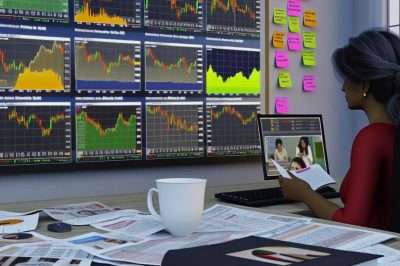Understanding the Basics of Trading
Understanding the fundamentals of trading is indispensable before embarking on more complex strategies. A firm grasp of how markets operate, the various types of financial instruments available, and key trading terminologies sets a solid foundation for traders. This foundational knowledge helps in making informed decisions and avoids common pitfalls, such as making hasty reactions to market fluctuations that can adversely impact trading outcomes.
Financial markets encompass a wide array of participants, including individual and institutional investors, each interacting within a network where securities, commodities, and other financial instruments are bought and sold. An understanding of the underlying market mechanisms, such as supply and demand dynamics, price discovery, and market regulation, is vital. Recognizing how economic indicators influence market behavior and how global events can create ripple effects aids traders in timing their entry and exit points.
Developing a Solid Trading Plan
The success of a trader is often attributed to a well-structured trading plan, which acts as the blueprint for trading activities. A comprehensive trading plan should encapsulate financial objectives, both long-term and short-term, alongside the trader’s individual risk tolerance. This plan should meticulously outline strategies for market entry and exit, solidifying a disciplined approach toward trading.
When crafting a trading plan, integrating capital allocation strategies is imperative. Determining how much capital to allocate per trade can help in managing potential losses. The plan also needs to evolve with time and market conditions, urging traders not to become emotionally attached but rather make adjustments based on clear and ongoing market analysis.
Risk Management and Diversification
Risk management is an essential component of successful trading, ensuring longevity and sustained profitability within the trading sector. Diversifying a trading portfolio by spreading investments across varied asset classes or industry sectors reduces vulnerability to adverse market movements. This strategy minimizes risk exposure and cushions against losses stemming from unexpected market shifts.
The utilization of stop-loss orders further aids in controlling potential losses. By setting predefined levels where trades are automatically exited, stop-loss orders serve as a pragmatic safety net that curtails loss without the need to monitor the market constantly. A disciplined approach to risk management safeguards trading capital and enhances the ability to withstand market volatility.
Continuous Education and Market Analysis
Thriving in the ever-changing financial markets mandates continuous education and diligent market analysis. Keeping abreast with current market trends, economic data releases, and geopolitical events is vital. Traders must continually evaluate market conditions using both fundamental and technical analysis techniques.
Fundamental analysis involves examining quantitative and qualitative economic indicators, financial statements, and company performance metrics. Conversely, technical analysis emphasizes interpreting chart patterns, trading volumes, and historical price movements. Engaging with educational resources like market newsletters or attending webinars extends invaluable insights and ensures that traders remain aligned with market developments.
Utilizing Technology and Trading Tools
Modern technology revolutionizes the way trading is conducted, providing traders with advanced tools and platforms to optimize their decisions effectively. Trading platforms, analytical software, and financial applications offer real-time data and analytics, empowering traders with actionable insights. By leveraging these technological advances, traders can execute trades more efficiently and manage a variety of strategies concurrently.
Automated trading systems, or trading bots, are becoming increasingly popular for executing trades with precision and speed beyond human capabilities. These systems can undertake numerous trading activities simultaneously, allowing traders to diversify their strategies. However, it is crucial to comprehend these tools comprehensively before incorporating them into daily trading operations to maximize their efficacy and avoid reliance on untested systems.
Networking and Learning from Other Traders
Building a network with other traders enables the exchange of practical knowledge and diverse strategies that might not be apparent individually. Online forums, trading groups, and seminars serve as platforms where traders can engage with peers, drawing from their successes and learning from their failures. These communities also offer moral support, engendering motivation crucial for persevering during challenging trading phases.
The collective wisdom from seasoned traders contributes invaluable insights and innovative techniques that can significantly enhance one’s trading acumen. Collaborative interactions encourage the exchange of ideas and foster a supportive environment that promotes continuous development.
Patience and Discipline in Trading
Success in trading endeavors necessitates patience and discipline, especially during periods of market volatility. The ability to maintain composure, adhere meticulously to a predefined trading plan, and resist the lure of impulsive, short-term profit chasing distinguishes successful traders. Practicing patience and steadfast discipline buttresses a trader’s focus on long-term goals and objectives.
Additionally, for traders seeking comprehensive trading strategies and market updates, resources such as financial news websites and trusted blogs dedicated to trading insights can be instrumental. These platforms provide a reservoir of expert analysis and continuously updated information, enhancing one’s capability to refine their trading approach and increment profitability over the long haul.





